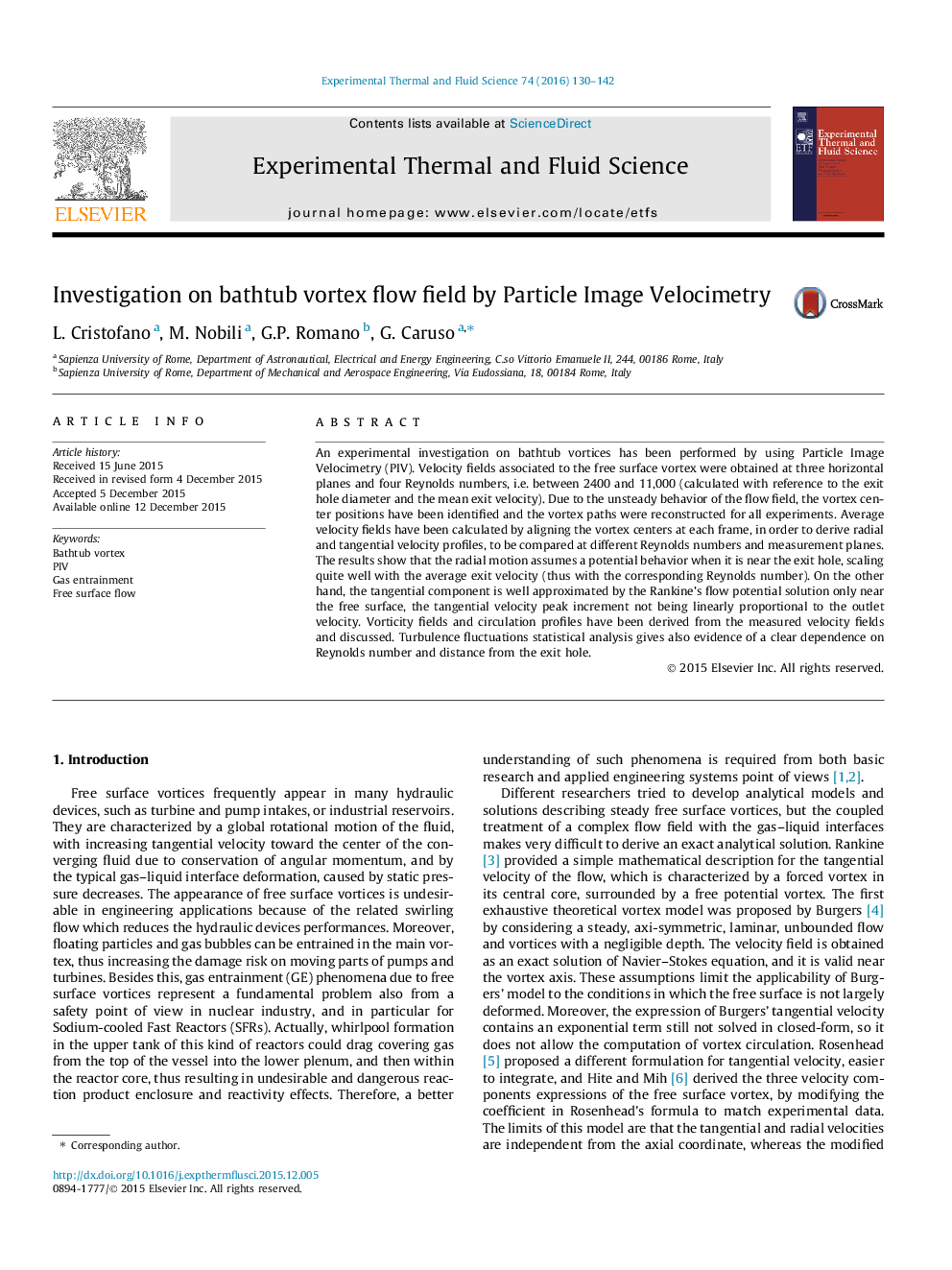| Article ID | Journal | Published Year | Pages | File Type |
|---|---|---|---|---|
| 651192 | Experimental Thermal and Fluid Science | 2016 | 13 Pages |
•A Particle Image Velocimetry investigation on bathtub vortices has been carried out.•Velocity and vorticity fields at different planes and Reynolds numbers were obtained.•Radial and tangential velocity profiles have been compared with the potential flow.•Turbulence fluctuations analysis of the vortex motion and velocity fields is included.
An experimental investigation on bathtub vortices has been performed by using Particle Image Velocimetry (PIV). Velocity fields associated to the free surface vortex were obtained at three horizontal planes and four Reynolds numbers, i.e. between 2400 and 11,000 (calculated with reference to the exit hole diameter and the mean exit velocity). Due to the unsteady behavior of the flow field, the vortex center positions have been identified and the vortex paths were reconstructed for all experiments. Average velocity fields have been calculated by aligning the vortex centers at each frame, in order to derive radial and tangential velocity profiles, to be compared at different Reynolds numbers and measurement planes. The results show that the radial motion assumes a potential behavior when it is near the exit hole, scaling quite well with the average exit velocity (thus with the corresponding Reynolds number). On the other hand, the tangential component is well approximated by the Rankine’s flow potential solution only near the free surface, the tangential velocity peak increment not being linearly proportional to the outlet velocity. Vorticity fields and circulation profiles have been derived from the measured velocity fields and discussed. Turbulence fluctuations statistical analysis gives also evidence of a clear dependence on Reynolds number and distance from the exit hole.
